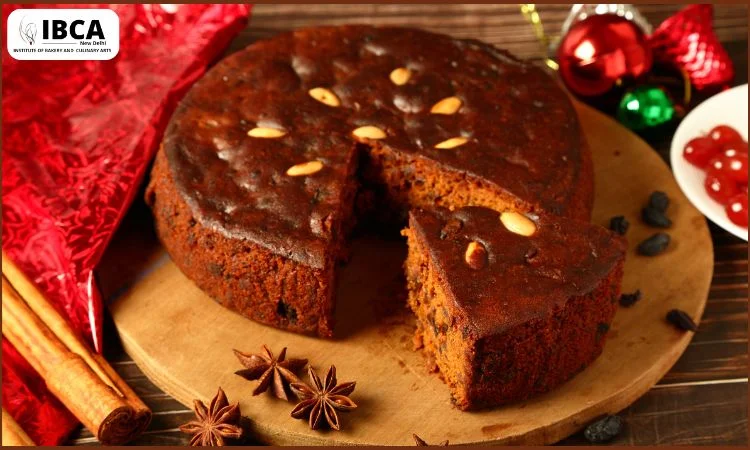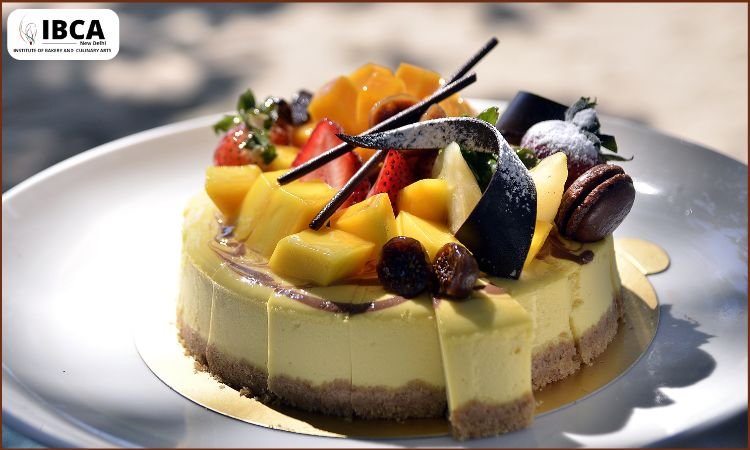Perfection in baking is not for everyone. We all know that the baking process does not always go as planned. We fantasize about baking a light and fluffy cake, but we end up making mistakes, and the cake baking develops into a dense block that is far from flawless.
The second most common error while cake baking is taking the pan out of the oven before the timer goes off. Just when everything appears to be going pretty smooth, you see the lovely golden brown you imagined, and when you pull the pan out of the oven to discover it is still unbaked. You were only disappointed after you departed.
Cake baking mistakes are easy to make, but thankfully Baking Course in Delhi gives you a chance to develop your baking skills. You will learn the art of baking and get to know valuable techniques that can help you enhance your abilities and make you a better cook in the long run.
Cake Baking Mistakes to Avoid for Perfect Results
So let’s have a look at some typical cake-baking mistakes.
Too Dense
If you’ve ever baked a dense cake that never seems to rise properly, there are a few reasons why this can happen. Cake flour may have been substituted for all-purpose flour, or too much sugar was used, but the most common reason is that not enough air was incorporated into the batter. Here are some tips on how to add air back into your batter while the cake baking process.
When making cake, the first thing to do is to mix the batter. If your recipe calls for oil, try not to rush this step. Let the air bubbles form!
A poor leavener is another cause of dense cake. Perhaps your baking powder or baking soda is outdated and ineffective. To help the batter rise and keep the air in during the baking process, you’ll need a decent leavener. A well-risen cake will not be dense! Too much flour adds dryness and heaviness to cakes and a collapsed structure. To keep your cakes light and fluffy, make sure you’re using cake flour instead of all-purpose flour. This recipe uses cake flour, but feel free to swap in all-purpose flour straight out of the bag if you don’t have any on hand.
A hot oven will make your cake rise like a champ. Preheat the oven for at least 20 minutes before putting your cake in for the best results. If you have a convection oven, preheat it to at least 325°F instead of 350°F. A fan-forced oven needs less time to come up to temperature than an old-fashioned regular oven, so keep this in mind when testing your oven with an oven thermometer!
Cake Overflows
The heat from the oven seems to make the batter rise up and over the edge of a burnt pan, causing it to run out of the cake onto the bottom of the oven (and I’m sure you know what that can do).
Filling your pan with less batter is the simplest remedy to this cake baking problem. Filling a cake pan halfway to two-thirds of the way up the edges is a good rule of thumb.
A Sunken Cake

While your cake may look nice on the outside, there could be a problem lurking in the middle. This happens more often than you might think. Two quick tests can help prevent a collapsed cake:
1.) Stick a toothpick or knife into the center of your cake. If it comes out cleanly with no sticky wet batter on it, then it is baked all the way through; if there is still batter on it or if it comes out gooey or wet, then give your cake another 3-5 minutes in the oven and retest again until fully cooked
2.) Use an instant-read thermometer (preferably digital!) to test for doneness. Once baked through, place a thermometer in several spots throughout the center of the cake; temp should be between 180-190 degrees F.
Many things can cause sunken cakes while cake baking. They could be underbaked, over-baked, or if you put too much batter in the pan. To avoid this problem, make sure your oven is at the correct temperature, do not open and close the oven door too often and use ingredients as directed; otherwise, your cake will sink!
Additionally, your cake will not maintain its shape and sink if your batter is not firm enough due to skimping on ingredients like eggs or flour. Lastly, it may also be caused by an air bubble formed during mixing and rising in the oven. This bubble needs to pop for your cake to settle evenly once cooled, making for a sunken appearance.
Stuck to the Pan
One of the most common cake baking problems is when a cake sticks to the pan. Although there are various reasons for this, one easy solution to try is to grease the bottom of your pans with shortening instead of cooking spray. It will help keep your cakes from getting stuck to enjoy a perfect dessert every time!
Crusty Edges
You may not know it, but a little bit of non-stick greasing goes a long way. If your cakes are tasting burnt and dry when they come out of the oven, it is likely because you’re making a mistake with the pan spray or grease. The most important part of greasing a cake pan is where you put the cooking spray – too much on one side of the cake, and it will cook unevenly. You should coat both sides with a thin layer of canola oil cooking spray so that heat can transfer from both sides evenly!
Cake Batter is Too Stiff
Adding too much flour when making cake batter will make your cake come out in a tough, dense texture. The stiff, sticky batter is usually due to adding too much gluten to the batter, which happens most often when over-mixing. Mixing for too long can also add too much gluten to your recipe, so make sure to scrape down the sides of your bowl as you mix to avoid this problem.
Fruit Falling to the Bottom

Fruit cake is a delicious dessert treat. It’s typically made with just fruit, nuts, spices, and some flour to hold it together. Fruit cakes often take days to prepare, so you need to plan before making one for special occasions or holiday feasts.
The fruit is heavy and sinks to the bottom of the cake, leaving it dense and unappealing. When the batter is too light and fluffy, or there isn’t enough flour in the batter to retain the fruit, it sinks to the bottom of the cake.
When baking a cake with fruit, a robust batter is preferable to something light like a chiffon cake.
If the fruit is overly saturated and dense, it will sink. Whole cherries or strawberries are two examples of huge, luscious fruits that sink in a cake.
If you have these fruits, slice them into small pieces before adding them to your salad.
Cake Sides Caving In
Cake sides sinking inward can be caused by one of three things: liquid, grease, or moisture. First, check to ensure your cake batter recipe has the correct amount of liquid and that you measured any liquid ingredients correctly. The cake should not be overly moist or oily. Next, make sure you only use a small amount of pan spray or butter to grease your pans. While you want your cake to pop out of the pan once it’s baked easily, the cake still needs to be able to “climb” up the sides of the pan to rise.
You’ll know how frustrating it can be if you’ve ever let a cake cool in the pan too long and then discovered that it has a recessed top. The best solution is to remove the cake from its tin as soon as it comes out of the oven, then transfer it to a wire cooling rack.
Cake Top Cracked
Cracked cakes can be frustratingly common if you’re unsure how to tell if your oven is too hot or what to do when it becomes too hot. A simple solution is to use an oven thermometer. The thermometer is inserted into a special hole on the back of your appliance or near the pilot light.
Baking a cake is a joy, and it can be really easy too. Whether you are a novice baker or an expert looking to try something new, we have plenty of recipes that make cake baking easy and fun. Baking Courses in Delhi also have lots of helpful tips on making the perfect cake every time, whether it’s following your recipe or ours.
Check out our YouTube channel Chef IBCA




